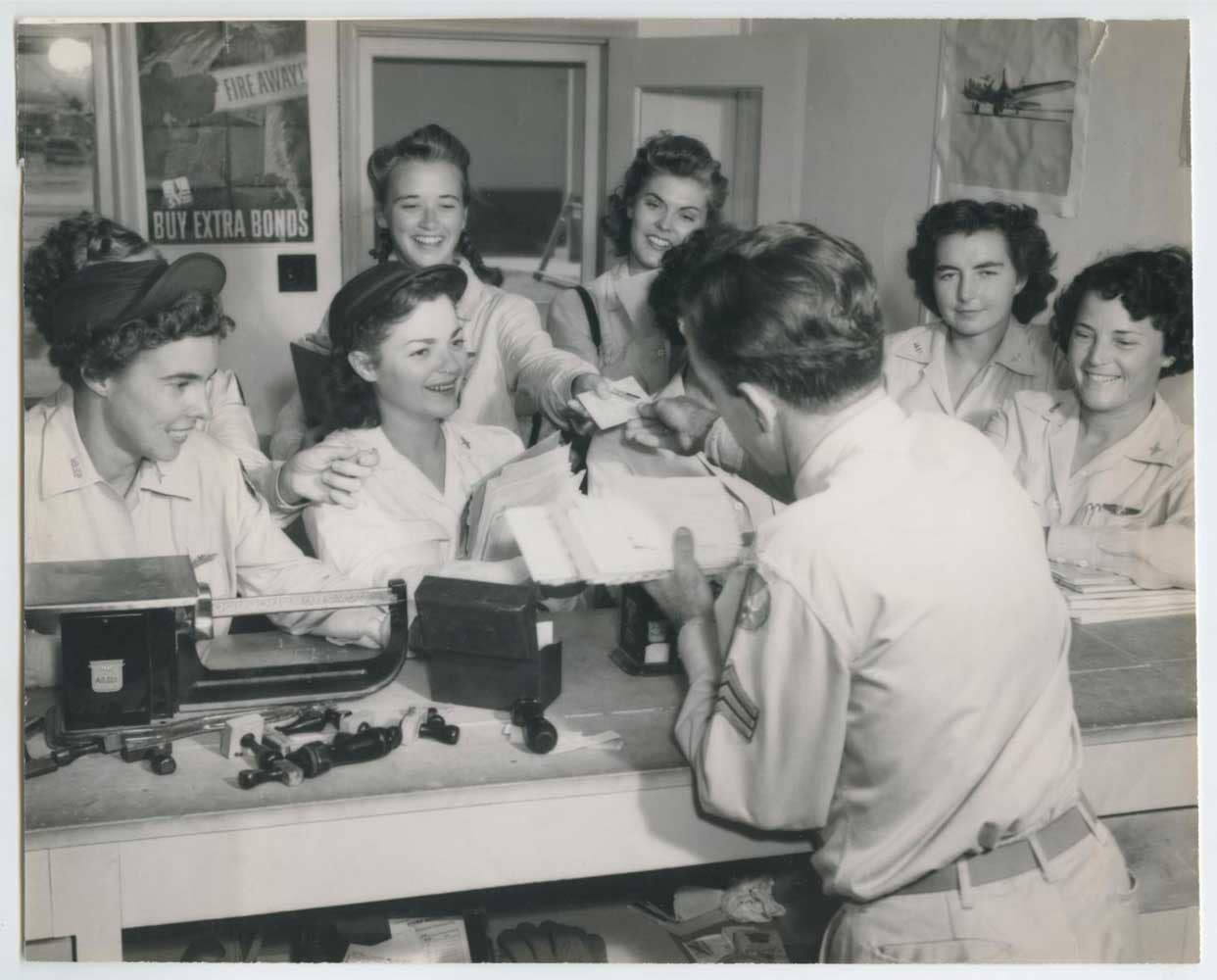In November 1942 the very first class of the WFTD (Women’s Flying Training Detachment) Class 43-W-1, arrived in Houston where they trained at Houston Municipal Airport (briefly called Howard Hughes Airport). Since there was a lack of housing and living facilities at the airport, the first class of women trainees lived in motels, hotels and boarding houses and had to find their own way to training. Most often, transport to the field took place in what were dubbed ‘Cattle-cars’.


Due to the meager living facilities, poor weather and congested air traffic at Houston, Jackie Cochran, the director of the program, sought a facility with centralized housing on base, classrooms, a mess hall, increased air space, maintenance hangars, a securely fenced perimeter, and the availability of aircraft for advanced training. In time, Cochran found what she was looking for, some 400 miles northwest of Houston at Avenger Field in Sweetwater, Texas. And by May 1943, the WTFD program was transferred to Avenger Field.
While the first class (43-W-1) was the only class to both train and graduate at Houston in April 1943, Class 43-W-2, which began their training in Houston, was the first class to graduate out of Avenger Field in Sweetwater, as did the succeeding 16 classes of WASP graduations.


Upon their arrival to Sweetwater, the women reporting for training took the same oath of office as male flight cadets and followed a military regiment (with the expectation of eventual militarization for the WFTD). The women lived in one-story, concrete floored barracks, with six women in each of the two bays in the barrack. Between the two bays there was a bathroom with two sinks, two showers, and two toilets, shared by all 12 women in the barrack. The accommodations were sparse, and each woman had a cot, a locker, and the suitcase that they arrived with was kept under the bed. Barrack inspections took place every week, generally on Saturdays, and the beds were expected to be made ‘the military way’ so that a quarter would bounce off the crisply made coverings. The uninsulated barracks were hot in the summer, cold in the winter.
The trainees were issued oversized mechanics jumpsuits, fitted for men, subsequently called ‘Zoot Suits’. These served the women as flight coveralls. When the coveralls, dirtied each day by the notoriously, dry, dusty western Texas airfield, required cleaning, trainees wore them into the shower, washed themselves and the coveralls off, and hung the garments to dry off, as laundry facilities were not available.
At the sound of a bugle’s reverie, wakeup was at 6 a.m. and after nearly 12 hours a day at the airfield, bedtime (lights-out) was at 10 p.m. to the sound of ‘Taps’.
Each day trainees marched everywhere in formation; to breakfast, to ground school, to the flight line, to calisthenics, and they also marched in parades and took part in infantry drills.
Each class was divided into two flights; Flight 1 and Flight 2. Flight 1 took place in the a.m. while Flight 2 attended Ground School. After lunch Flight 1 and 2 switched places. Half of the day was spent flying in busy airspace, practicing take-offs and landings, stalls and spins. The other half of the day took place in ground school, studying aerodynamics, navigation, electronics, weather and meteorology, mathematics, physics, Morse Code, aircraft mechanics, and more.


The three phases of military flight training were : Primary: 70 flying hours in the PT-19 and PT-17; Basic: 70 flying hours in the BT-13 which involved learning to fly by instrument ‘under the hood’ with an instructor or another trainee as observer; Advanced: 70 flying hours in the AT-6 and the AT-17, used to teach cross country, night flying, and certain aerobatic maneuvers.

After check-rides, those who ‘washed-out’ were sent home immediately at their own expense. Sometimes, if the trainee did not have the funds to pay for transport home, a collection was taken by their fellow trainees. But those who successfully completed all three phases of training received their silver wings and were assigned to 120 Army air bases and airfields throughout the country either in the Ferry Command or the Training Command.




Written by: Julia Lauria-Blum
Photos courtesy of: The Official National WASP WWII Museum Archive
About Julia Lauria-Blum:
Julia Lauria-Blum earned a degree in the Visual Arts at SUNY New Paltz. An early interest in women aviation pioneers led her to research the Women Airforce Service Pilots of WWII. In 2001 she curated the permanent WASP exhibit at the American Airpower Museum (AAM) in Farmingdale, NY, and later curated ‘Women Who Brought the War Home, Women War Correspondents, WWII’ at the AAM. She is the former curatorial assistant & collections registrar at the Cradle of Aviation Museum on Long Island and is currently editor-in-chief for Metropolitan Airport News.
Julia is the proud mother of two daughters and a rescued Boxer. Her many interests include swimming, painting, traveling, aviation history, cooking, and storytelling.


